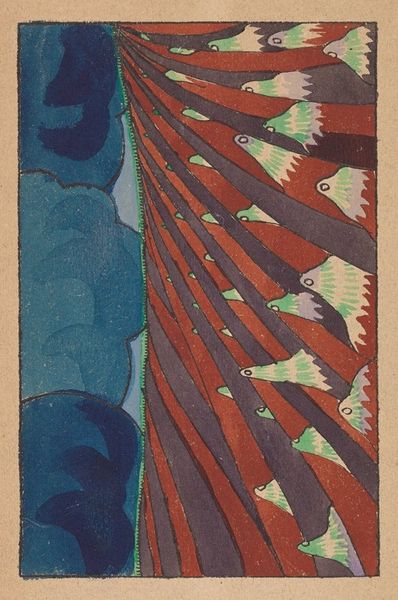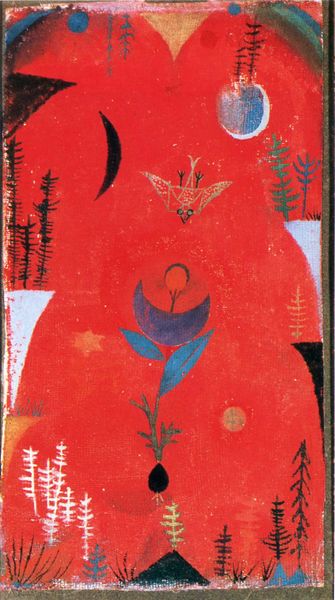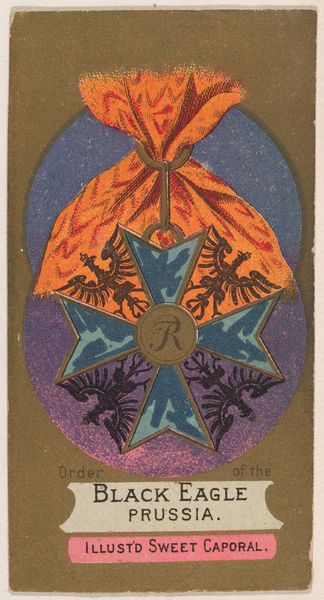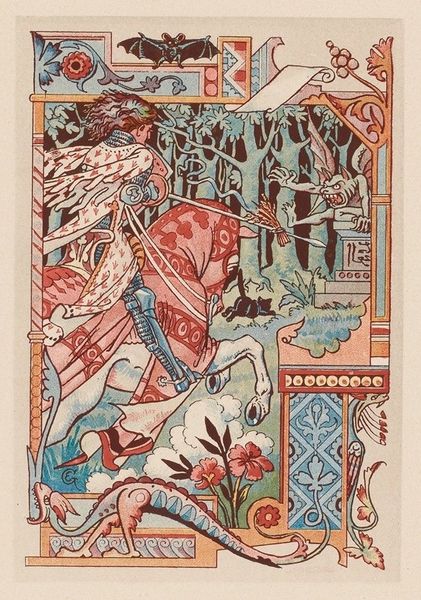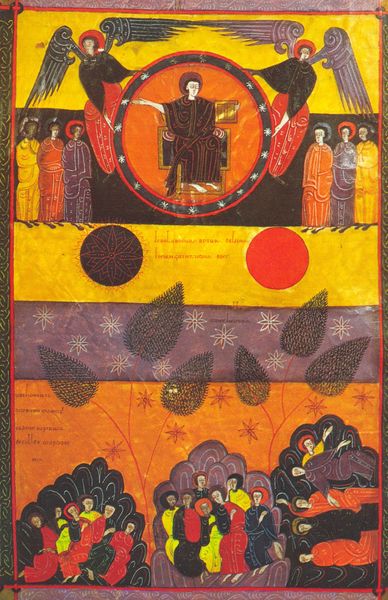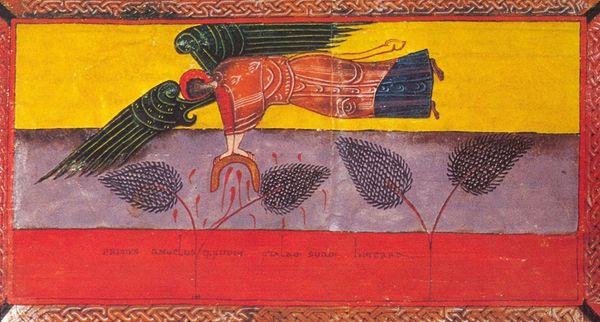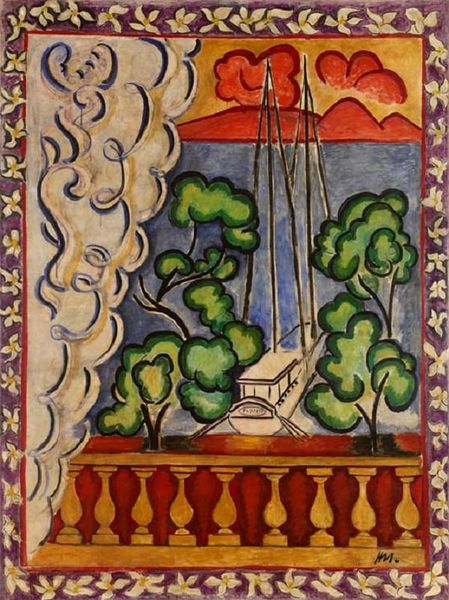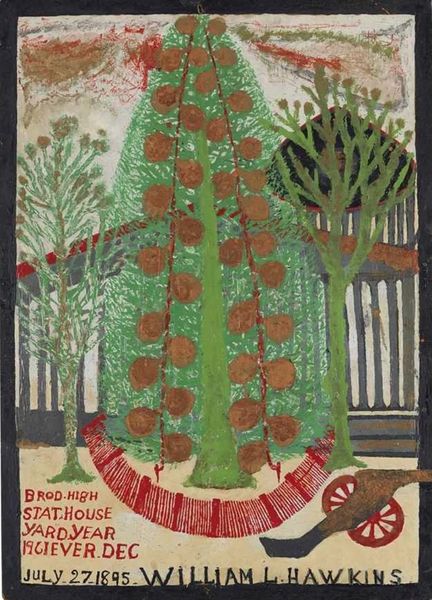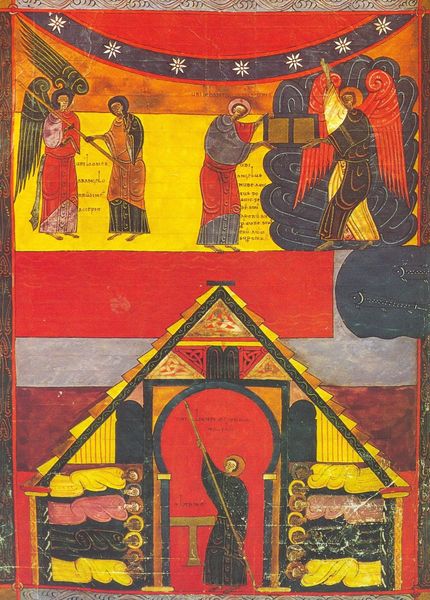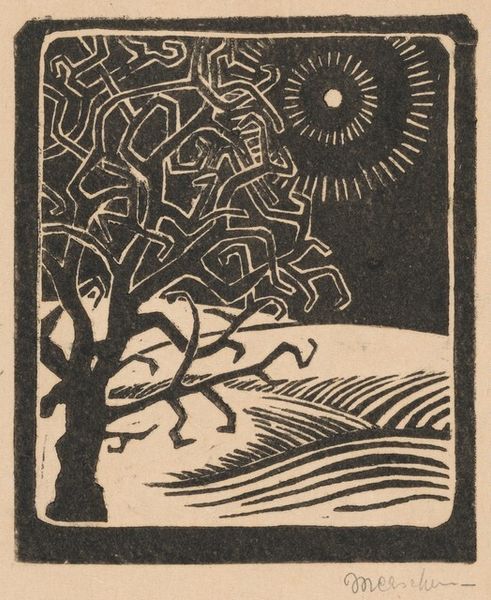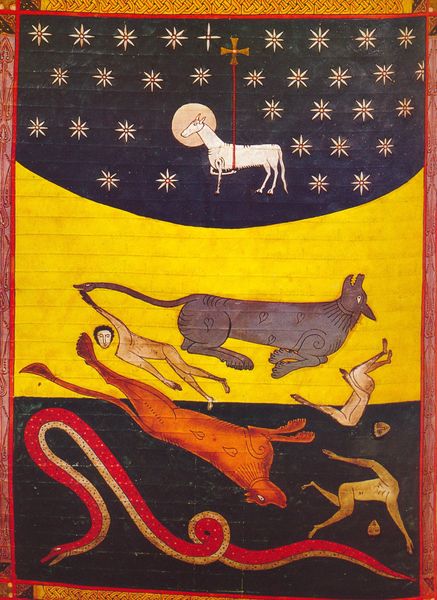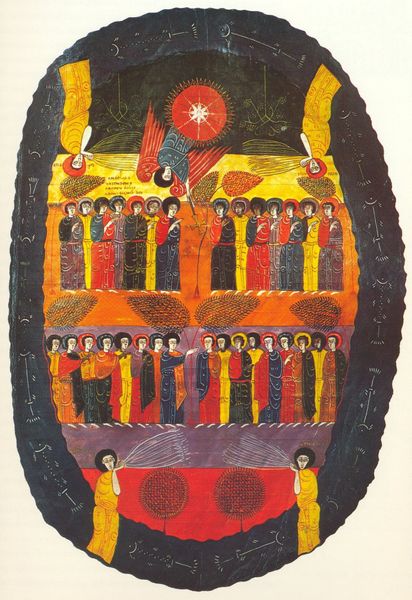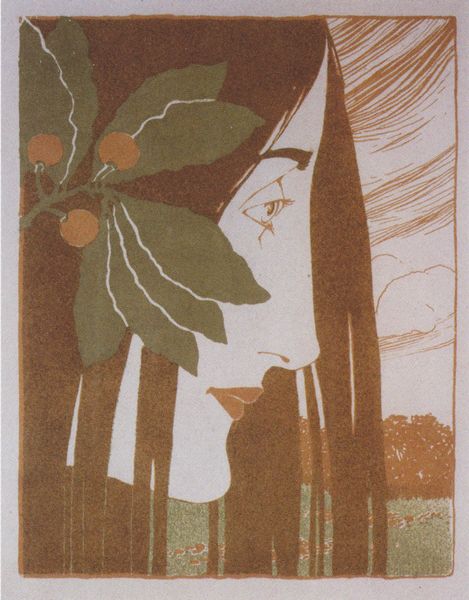
tempera, painting
#
byzantine-art
#
medieval
#
narrative-art
#
tempera
#
painting
#
figuration
#
naive art
#
miniature
Copyright: Public domain
Curator: The first impression I get from this painting is one of dramatic, stylized foreboding. It’s quite striking. Editor: Absolutely. It looks like a vision of biblical catastrophe. This tempera painting depicts "La premi\u00e8re Trompette. La gr\u00eale de feu m\u00eal\u00e9e de sang. Apoc. VIII,” or “The first Trumpet. Hail of fire mixed with blood.” It's attributed to Facundus, and takes its subject from the Book of Revelation. Curator: Hail of fire mixed with blood, indeed! The imagery is intensely evocative, even without the title. Look at the angel, the stylized landscape. Do you see visual echoes of traditional symbolism here? Editor: Most certainly. The red used for the angel's robe and the trumpet blast can be seen as a signifier of passion, and even sacrifice within the established iconographic tradition. This combined with the fiery hail creates a clear warning. Notice the repetitive dots, suggesting destruction raining down? Curator: The almost geometric shapes of the mountains below amplify that sense of structured, unavoidable destiny. It’s all rendered in a manner reminiscent of Byzantine miniatures. What is most interesting is how even though it's clearly intended to instill fear, there's an undeniable sense of beauty, which says something about our cultural fascination with dramatic stories and archetypal themes like apocalypse and rebirth. Editor: A fitting point! Especially when considering this work likely functioned within a illuminated manuscript format meant for sustained viewing, it would definitely encourage meditation upon themes of human fate and morality. This calls forth interesting issues around didactic functions of religious imagery within social control too. Curator: Indeed, that contrast—destruction rendered in such deliberate, almost elegant, detail—keeps our eyes engaged. It makes one question both the power of belief and the power of art to visualize complex ideas. I found myself getting drawn in much more than I anticipated when first viewing it. Editor: It offers a visceral representation of anxiety and fear. A valuable record into what the medieval populace projected and feared, and of course, an enduring visual of profound destruction.
Comments
No comments
Be the first to comment and join the conversation on the ultimate creative platform.
